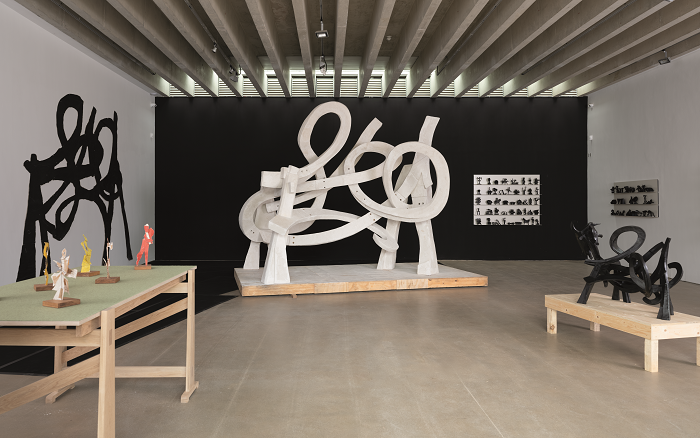Insights

Q&A: A Three-Dimensional Pull of Gravity - William Kentridge
Image Credit: Yorkshire Sculpture Park, © Jonty Wilde All Rights Reserved, William Kentridge.
William Kentridge: The Pull of Gravity, opened at the Yorkshire Sculpture Park on 28th June. In celebration of the opening, we were lucky enough to host him as a guest speaker at a private dinner at the Goodman Gallery, London. Highlights of his conversation with YSP’s Director, Claire Lilley, are extracted below.
When did you develop an interest in three-dimensional art?
Although I am not primarily known for sculpture, I have created hundreds of pieces over the years, ranging from small to larger works. Initially, I viewed them as drawings translated into three dimensions, beginning with silhouettes and cut-outs that became sculptural in wax, wood, or bronze. It took me a while to realise that they they stood in three dimensions, that you could walk around them and that they were sculptures. Since then, my practice has evolved.
How would you define your sculpture style?
In some ways, a number of my sculptures are ‘anti-sculptures’ in that they only make sense if you view them as a two-dimensional image. From a particular viewpoint, you shut one eye and the different fragments fit together and become a coherent image. Otherwise, you see a shattered image. I have also created other kinds of impossible or invisible non-sculptures, some of which are in the YSP exhibition.

William Kentridge,The Pull of Gravity,2025,© William Kentridge. Courtesy the artist, Goodman Gallery, Galleria Lia Rumma and Hauser & Wirth,Photo_Jonty Wilde, courtesy YSP
What is the role of uncertainty in your work?
My work embraces the uncertainty that arises from collaboration, drawing on my experiences in theatre and solo studio practice to value the creative energy sparked when ideas meet. I approach both filmmaking and sculpture without a set plan, letting the process determine the outcome.
There is an African proverb, which, roughly translated is: If the good doctor can't cure you, find the less good doctor. In other words, when grand ideas start to fail, look for different ideas in the cracks, in the interstices, in the periphery. Be open to those things. And instead of getting more and more certain of yourself, allow the uncertainty to come to the fore.
How important is music and language to your work?
Very important. Keeping a notebook is essential to my creative process. I collect phrases and lines of poetry by great writers, which later become the foundation for my librettos – a collage of collected text. For an artist, my notebooks have far more words in them than drawings. They're mainly lists and phrases not careful drawings in beautiful sketchbooks the way many artists have!
When I started working in the medium of film, each project started as an experiment – pairing scenes with various pieces of music to uncover how sound reshapes perception and how visuals influence what we hear. Its an ongoing process. Pre- written music and working with singers and composers is a big part of my process.
What is the meaning of the title of the exhibition?
The Pull of Gravity is a recurring theme in the work of Yorkshire poet, Ted Hughes. The pull of gravity – the grave – is going to catch us all in the end. So life, this ‘brief weightlessness’ is somewhere in that unspoken space in between. The exhibition asks: What is it to come from the brief weightlessness and to be pulled down by this weight?
How subjective is the appreciation of art?
Art serves as a membrane between us and the wider world. Imagine a very rough drawing of a horse. Even a simple sketch of it is instantly recognisable, yet each viewer brings their own associations, memories, stories, and experiences from art and literature. So, although it's the same image for everyone, each person will project part of themselves – their individual histories – onto it.
William Kentridge: The Pull of Gravity is at Yorkshire Sculpture Park, Wakefield, 28 June until 19 April